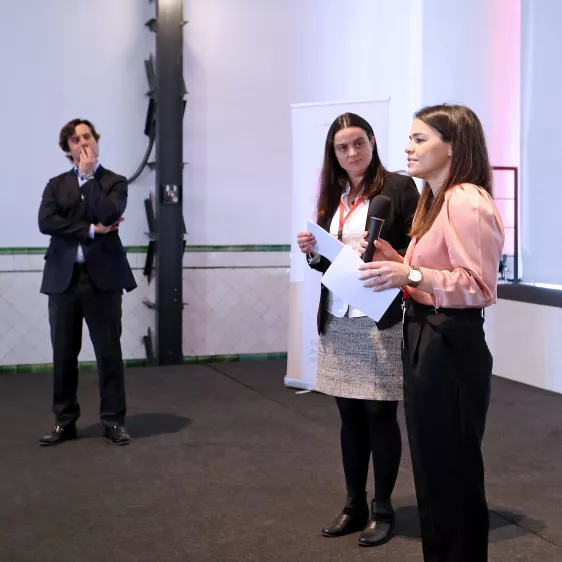About the Leadership Programs by the School of Management Development
The Leadership programs offered by the School of Management Development are designed to equip all managers (in this instance, Middle Managers) with the right set of leadership skills to effectively manage their teams. Skills reinforced in the training sessions include effective communication and feedback-giving, creating and maintaining networks, implementing strategy for effective people management, etc. These leadership programs are namely: Global Leadership program, Lead Now, Leading Others, and Leading Clearly.

a) Global Leadership program: The Global Leadership Program is aimed at promoting networking among the group's middle management and developing the know-how to implement strategy and leverage people management skills. It is divided into two immersive meetings in two non-sequential weeks and includes training sessions, self-awareness tools, and business challenges for participants to address. Participant's satisfaction for the Global Leadership Program has remained solid and high since it's inception in 2015, with a global appreciation of 4.2 (on a scale of 0 to 5).
b) Lead Now: This program aims to develop leadership and management skills and to harmonize leadership practices in EDP Group, through training sessions, coaching and self-awareness tools.
c) Leading others: Designed for experienced managers at EDP Portugal Group, Leading Others is aimed at updating the knowledge of these managers in leadership and management and creating an environment for them to share experiences with other managers. This program includes training sessions, workshops for sharing leadership practices, and self-awareness moments.
d) Leading Clearly: Leading Clearly were sessions developed for several levels of Management in the EDP Group, with the goal of clarifying employee Development & Performance management in the company.
Benefits of the Leadership programs
Collectively, the leadership programs:
- Guarantee the future of the company by developing Managers who have a strong grasp of the company’s strategic vision and purpose
- Reinforce the company’s goals to be a top player in attracting, retaining and empowering talent
- Help with succession planning for key executive roles
- Help to improve communication and a positive feedback culture in the organization
- Aim to prepare Managers to embrace the global changes of EDP Group.
“The Lead Now Program was a really great experience for me and far beyond my expectations.
It is more than a leadership program, it is a journey with great content, group reflections and structured coaching sessions. It was a very exciting learning experience!
Thanks to this program, I feel that I have been able to take a big step forward in developing my leadership abilities and people development.”
Marta Belo, Corporate Services Director, EDP Valor

Metrics Methodology: Savings in Turnover Cost per Training Investment (for Middle Managers)
This metric measures the savings in turnover cost for every €1 invested by the company on the training and development of middle managers. Middle Managers from all locations where the EDP Group operates undergo the leadership programs offered by the leadership development school, with the aim of developing their management and leadership skills.
With this metric, we aim to understand how efforts in training and developing these segment of managers translate to the rate and cost of turnover. In order to ensure that the effectiveness of the training can be reliably measured, a series of steps are followed which ultimately lead up to a result for the metric.
a) The total cost of replacement or turnover cost is calculated for the middle management segment. This is the total cost of replacing managers who voluntarily exited the company. This cost includes direct costs of hiring a new manager, onboarding costs, lost productivity, training costs etc.
b) The total cost, direct and indirect, for the program is computed for each year.
c) A year-on-year comparison for turnover costs is made to measure what savings or losses were accrued. For instance, compared to 2016, did we have a reduction (savings) or an increase (loss) in turnover cost in 2017? A positive difference between turnover costs in a previous year and present year signifies a savings while a negative difference signifies a loss. It's important to note here that, since the program was launched in 2015, results for savings or losses only start in 2016.
d) The loss and savings computed are divided by the cost of training in each corresponding year to reach a value for the metric e.g., In 2017, the company saved €1.40 in turnover (compared with 2016) for every €1 in training investment, while in 2018, it recorded a loss of €1.86 in turnover (compared with 2017) for every €1 spent on training.